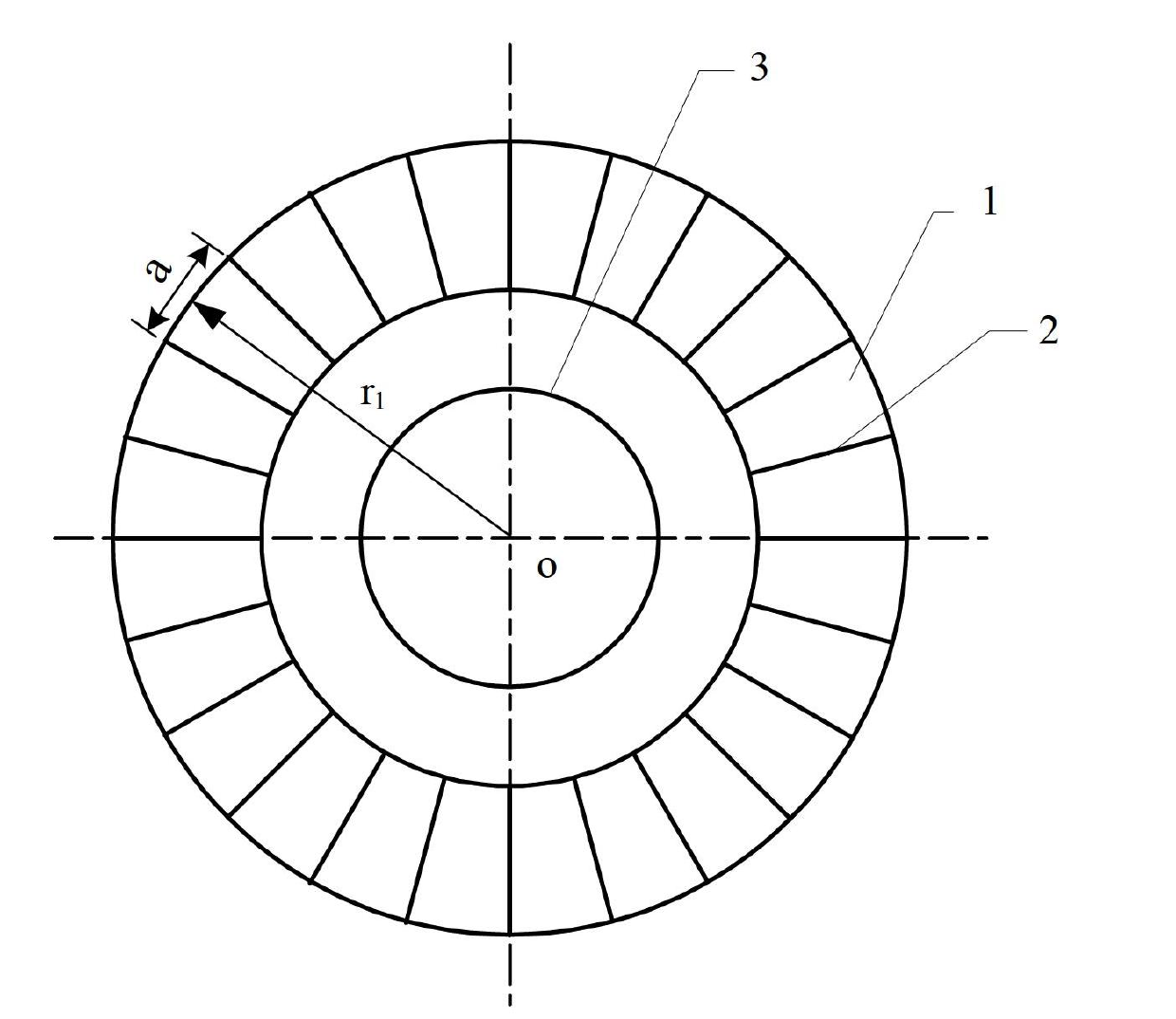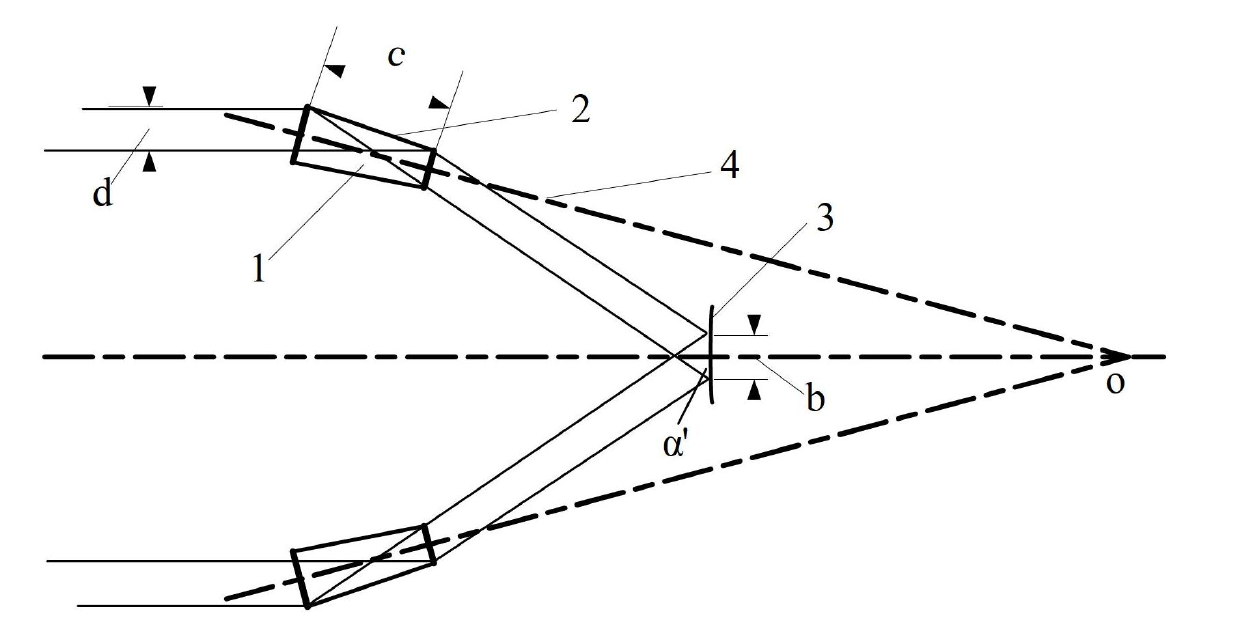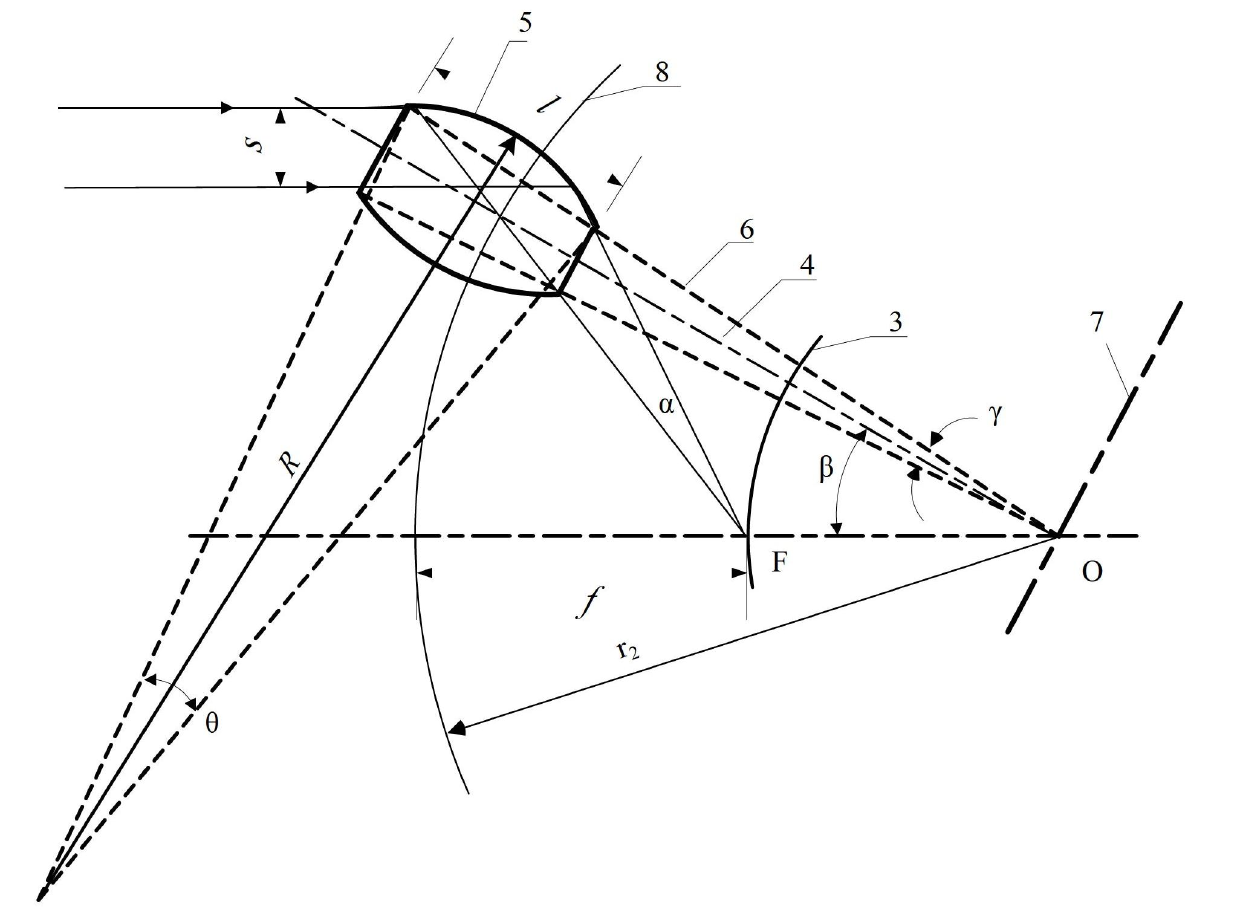Lobster eye lens with reflection barrier being revolution surface formed by planar circular-arc bus
A technology of lobster eye lens and surface of revolution, which is applied in the field of lobster eye lens, can solve the problem that the spatial resolution of lobster eye lens is difficult to improve, and achieve the effect of improving spatial resolution
- Summary
- Abstract
- Description
- Claims
- Application Information
AI Technical Summary
Problems solved by technology
Method used
Image
Examples
Embodiment Construction
[0011] See image 3 As shown, s is the vertical diameter of the incident end of the microchannel tube, l is the chord length of the plane arc bus 5, α is the reflected light rotation angle, β is the angle between the axis 4 of the microchannel tube and the direction of the incident light, and γ is the tension of the microchannel tube angle, f is the focal length of the lobster eye lens, r 2 is the radius of the active spherical surface 8 of the lobster eye lens, and f=r 2 / 2, θ is the angle between the normal of the first reflection point and the normal of the last reflection point of the reflecting wall, and α=2θ. Since l is a relatively small value compared to f, it is approximately considered that s is the beam width corresponding to angle α, therefore, At the same time, because θ=l / R, and according to the conventional method of optical design, β is taken at 0.707 caliber height corresponding to the central opening angle, and finally:
[0012] R≈2.94lf / s (2)
[0013] I...
PUM
 Login to View More
Login to View More Abstract
Description
Claims
Application Information
 Login to View More
Login to View More - R&D
- Intellectual Property
- Life Sciences
- Materials
- Tech Scout
- Unparalleled Data Quality
- Higher Quality Content
- 60% Fewer Hallucinations
Browse by: Latest US Patents, China's latest patents, Technical Efficacy Thesaurus, Application Domain, Technology Topic, Popular Technical Reports.
© 2025 PatSnap. All rights reserved.Legal|Privacy policy|Modern Slavery Act Transparency Statement|Sitemap|About US| Contact US: help@patsnap.com



